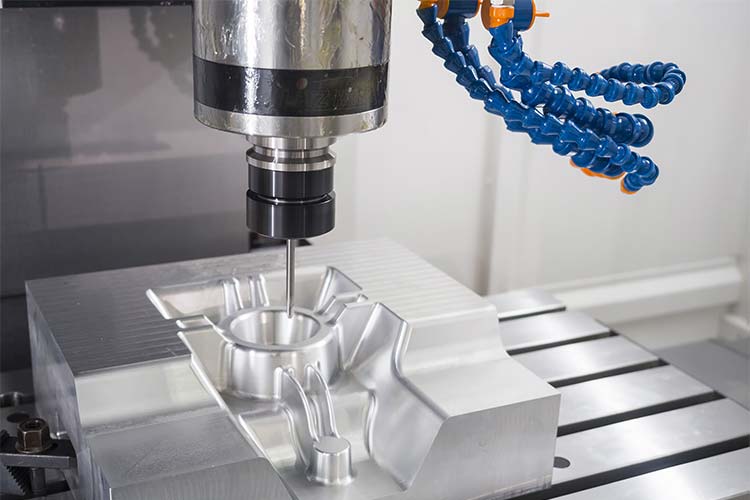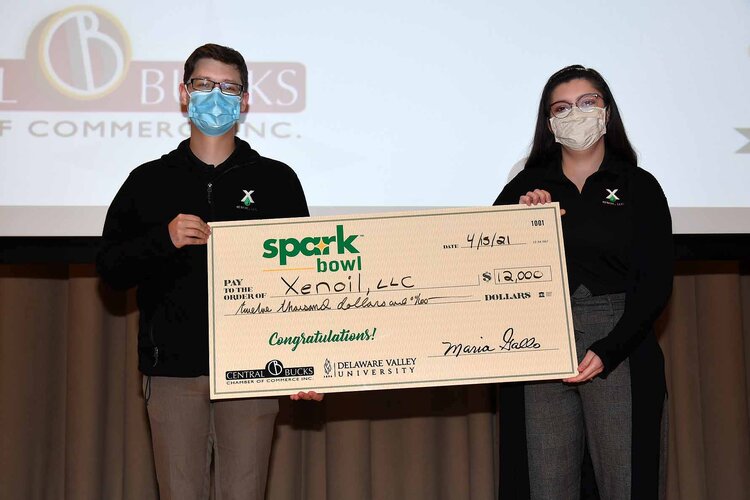Any company that has developed a product knows that prototyping is expensive -- sometimes prohibitively costly. There are many costs involved that most companies can't absorb, such as design labor and prototyping materials that are thrown away when you're ready to make final production runs.
So, what do most companies do when they have something they need, but can't have it affect their overall operation? They outsource it to machine shops, prototyping companies, and manufacturing companies that focus on small runs of products and one-offs. Those shops have to make money, and just because prototyping is their top-line business doesn't mean the bottom line is any lower for them. Materials are still expensive, design takes time, and sometimes prototypes have to go through multiple revisions before a final product is developed.
Prototyping a Knuckle Joint
For this hypothetical situation, we will estimate the cost of prototyping an aluminum part on an automobile, say a newer, stronger knuckle joint for an off-road vehicle. These parts are complex with thick and thin sections as well as many points where bolts, bearings, and other components must connect to make the suspension of the vehicle work.
In most situations, when prototyping a new part, shops utilize aluminum 6061 as it machines well and is cost-effective compared to other metals. For this part, the material needs to be 8 inches wide by 8 inches long by 6 inches thick because of the long protrusions and extensions from the central hub.
According to Onlinemetals.com, a block of metal this size would cost around 387 dollars (USD) per piece and weighs approximately 37.5 pounds. After the initial design review and engineering process, the design has about a 60% removal rate, which means that 60% of the material is removed from the final part. When the piece is finished, it weighs around 15 pounds.
Prototyping Complete
At this point, most shops complete their prototyping process, and they recycle their chaff. At an estimated scrap rate of 10 cents for aluminum turnings, the shop would receive around 2 dollars (USD) from recycling the scrap material. This would make the total cost of prototyping materials to 230 dollars (USD) counting for the recycling of the chaff.
This situation is the perfect world, where everything fits as it's supposed to the first time, and there are no problems with the part or redesigns.
The only savings where companies can get at this point would be discounts with their suppliers or attempting to get better scrap prices for their scrap. Unfortunately, because every situation for every company is different, we can not assume any of these things for this estimate. Getting a discount on the material is hard without huge volumes, and getting a better price on recycled scrap is next to impossible as most scrap recycling companies work on immensely small margins. The total savings at this point for the prototype are the original two dollars that were saved by recycling your scrap material.
...Or Is It?
But as it's known, projects aren't perfect, and unfortunately, when the knuckle joint was test fit, two of the holes didn't line up because of an unexpected interference with the strut.
Now the project materials instantly cost 383 dollars (USD) for the failed first part and another 230 dollars (USD) for machining out a second one for a total cost of 613 dollars (USD). This process will continue until the part meets the specification precisely and is ready for the full production run.
“The prototyping process could quickly bloat to several models before approval by the client.”
Extra Costs
Now hopefully, this project doesn't cost more than it has to. Still, due to various design constraints, unexpected failures during testing, and potential error in the manufacturing process, the prototyping process could quickly bloat to several models before approval by the client.
Although the shop is charging per model or a more significant flat rate with change orders to gain revenue from the project, this affects the bottom line of our prototyping shop, considering only the last two of seven models were going through stress testing. At this time, shops producing prototype parts for clients need to find ways to cut costs in their process, and one way they can do that is by using a prototyping material.

A comparison of cost in successful verses unsuccessful prototyping runs.
Prototyping with XenoWax™ Machinable Wax
Prototyping materials can include anything from plastic or wood to anything shops can find on their premises. Still, those materials cause a lot of single-use waste, and if prototyping in metal, that metal could be used to make money with another part or production run. This is where specially designed prototyping materials, such as XenoWax™ sustainable machinable wax, can help a shop with their bottom line. The unique material properties of machinable wax allow for any failed parts or scrap to be melted down again and recast into a new block.
If we use our example from before with the steering knuckle, a block of XenoWax™ machinable wax in 8 inches by 8 inches by 6 inches would cost 64 dollars (USD), which is an immediate savings of 323 dollars (USD) from our aluminum prototype. If extended out over the project for a total of five models in machinable wax, the savings by using this new material would be 1,934 dollars (USD). That's extra money that goes from being a cost to being top-line revenue. This means even more savings for the company and waste can be used over and over again for multiple projects while still charging your rates for high-quality design, smooth client workflow, and the exceptional skills of your machinists.
“The value of using a specially made prototyping material... can save between 72% - 95% of the prototyping costs from traditional aluminum prototyping.”
The Value of Prototyping with XenoWax™ Machinable Wax
In this situation, the value of using a specially made prototyping material such as XenoWax™ can save between 72% to 95% of the prototyping costs from traditional aluminum prototyping. When prototyping in standard carbon steel, those savings can be between 79% to 96%. This estimate comes with the assumption that none of the chaff of the prototyping material can be reused. In some cases, the chaff can be recycled to reduce the material costs, but in all cases, failed and old prototypes can be melted down and recycled.
This recycling process can help shops save on the costs of prototyping material. Some shops that work with exotic metals such as titanium, Inconel or Hastelloy, Chromoly steel, nickel, and more will usually try to prototype with the material they plan to use in manufacturing. However, depending on the metal, these shops can work with a single prototype and save between 20 to 200 times the cost of the intended material by manufacturing their first prototype from machinable wax.

Comparison of Machinable Wax vs Aluminum Prototyping
“When giving a customer a physical representation of the intended final product… it shows your value.”
Conduct a Final Design Review
The value of conducting a final design review in a substance such as XenoWax™ machinable wax will help you get repeat clients and can make you money. Most shops that are dealing with simple or complex components don't conduct a final design review because they don't think it's necessary. Still, it can give that extra touch of professionalism and provides the customer with something physical to grasp and feel. It shows them your value and is merely buying more customer loyalty. This final step can get you a repeat customer over and over again because you gave them physical proof that your shop can perform precisely the quality they want for the price they need as per your quote. It provides a boost of confidence with your shop's quality and trust with your shop's operation.
By improving the customer experience with this final step, your shop can increase many critical priorities of your business, including customer experience, conversion ratios, product rating, the ability to cross-sell jobs, and, most importantly, customer lifetime value and year-over-year order numbers.
So, What Are the True Costs of Prototyping?
Finding value in something as simple as the materials you machine is very difficult, especially if it is something you have never used before or seems unorthodox. Xenowax™ machinable wax can save your company thousands of dollars every year when used correctly and can provide added value to your relationships when performing work for new or repeat customers.
Here at Xenoil, we make sure to help the environment with its waste problem while helping your shop reduce your operational costs dramatically by utilizing the power of recycled oil-based materials to help you get the job done. If you want to find out more about how this specially made prototyping material can make or save your company money and increase the ROI of your projects, explore the other parts of our website here at Xenoil or feel free to email us at xenoil.info@gmail.com.



